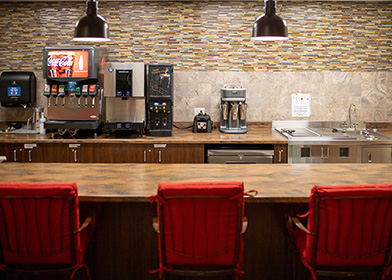
5 WAYS EXECUTIVE DIRECTORS CAN IMPROVE FOODSERVICE AT SENIOR LIVING COMMUNITIES
As any executive director knows, a great foodservice program led by an amazing and engaging chef or director will wow prospects and keep your occupancy numbers high. Unfortunately, a bad foodservice program can have the opposite effect, sullying a community’s reputation. Residents may not always know if they are getting the care or amenities they deserve, but they will always know if their meal is under-seasoned, overcooked, or cold.
Delicious food and memorable dining experiences are critical to the overall success of any community, large or small, from winning over prospective residents, to maintaining existing resident satisfaction. According to SurveyStance, food quality and dining experience are top indicators of resident satisfaction. However, even with the best intentions, resident surveys find food complaints in the top five frustrations.
Creating a great foodservice experience at your senior living community is a team effort. From the executive director to the serving staff, everyone plays an important role. Too often, executive directors who do not have a background in foodservice will focus their energies elsewhere, but your presence is a critical piece to making your food and beverage operations a success.
- ATTEND THE PRE-SERVICE MEETING. Being present at this meeting is vital to good communication. It encourages the whole team to share updates and feedback, while creating better communication and teamwork expectations within your foodservice team. And for the executive director, it enables you to keep a pulse on how the team is doing – Are they motivated? Appreciated? Angry? Do the leaders of the department have things on task? Do they need additional support? Once you are informed, you are better equipped to handle challenges and make improvements.
- WALK THE KITCHEN. It is just as important to do a walkthrough of your kitchen as it is your daily tour route. As you walk through the kitchen, keep track of items including:
- Is the team maintaining cleanliness standards?
- Is the area kept organized and tidy?
- Is the equipment in good shape, or does it need to be replaced because it is old and not functioning properly?
- Is your serving ware presentable and representative of the dining experience you wish to provide to your residents?
If your organization does not have a daily checklist for you to use, create your own or find one online.
- EXPERIENCE THE FOOD. It is important to have a good relationship with the chef, and make sure he or she understands the impact dining has on resident satisfaction. It all starts with presentation. Discuss the importance of food presentation, the concept of eating with your eyes first, and how it impacts the overall dining experience. Encourage them to be creative and foster a restaurant mindset towards plate presentation, brunch, or buffet displays, and changing tabletop pieces seasonally. Even with the most talented chef, mistakes can happen. Tasting menu items prior to service helps you as the community leader be proactive in preventing customer complaints around food quality. It also shows the foodservice team that you are invested in the quality of their final product. Empower them to set a high standard by demonstrating the value of quality assurance.
- BE PRESENT FOR SERVICE. Your presence as an executive director allows for an "outsider's" perspective on service flow and staff training needs. It also gives residents assurance that you have a handle on meal service and helps reduce complaint escalation. And it shows that you value the work of the foodservice team by being there for support and assistance. Encourage other departments to assist in meals, if needed, and visit with serving residents during this time.
- REVIEW YOUR PURCHASING. Food is a community's second largest expense outside of labor. Poor purchasing practices cost you time, money, and loss of productivity in the kitchen. A daily review of spending allows you to be proactive in determining and managing the food budget. Work with your foodservice director to develop better strategies and processes for purchasing. Reach out to your supplier partners to assist with ways to optimize your budget, including consolidating purchases for fewer deliveries, buying seasonal produce, and creating special menu items with lower cost products or sale items.
All of these activities allow the executive director to be more fully engaged in the operation of the foodservice program. Over time, you will gain more confidence in the foodservice aspect of the community, and everyone will benefit.
Need assistance?
Contact a Boelter foodservice expert today for your equipment and supply needs.
Connect with Trestle Hospitality for additional operational tips.